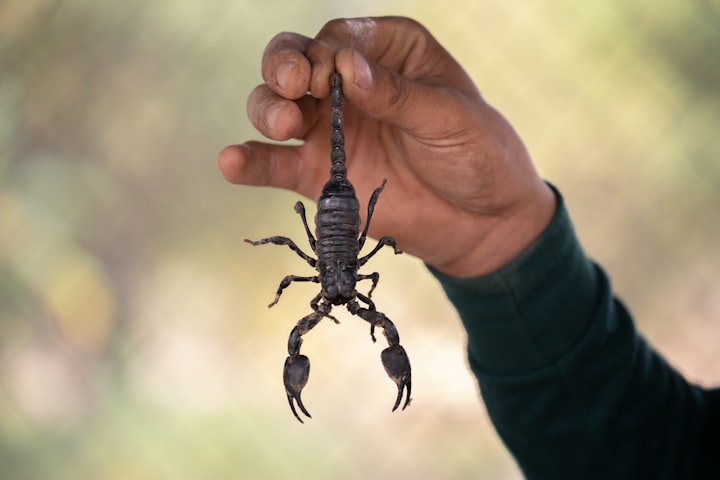Arizona's Rich Mining History – A Tale Of Terror And Triumph
The quest for mineral wealth defines Arizona's rich history

Written By: Marlene Affeld
The majestic mountains and mysterious desert sands of the region that is today the state of Arizona were first laid claim to by Spain, then Mexico. Subsequent changes resulted in the United States' acquisition of land from Mexico.
In 1848, the confirmation of the Guadalupe Hidalgo Treaty on February 2 secured the land for the United States. Under another treaty purchase made by James Gaddsen, on behalf of the United States on December 30, 1853, the United States acquired from Mexico the land lying south of the Gila River.

History records little of the mining activities in Arizona during the Spanish or Mexican involvement. However, the Planchas de Plata mine (Plates of Silver) gained worldwide fame. Wrapped in mystery, the Planchas de Plata is believed to be composed of several "lost" mines. In 1817. Dionisio Robles led an expedition into the mysterious Santa Rita Mountains. Although the party explored extensively, they did not find the lost mines.
Tales of rich mineral deposits and hidden treasures in the Cañada del Oro of the Santa Catalina Mountains, north of Tucson, Arizona, started as early as 1500 with the infamous expedition of Coronado. Used as a medium of value, gold motivated early mineral expeditions, including Francisco Vasquez de Coronado's 1540s failed attempt to find the Seven Cities of Cibola.

The mining efforts of the Spaniards in 1700 added to the treasure trove of stories of lost mines and hidden gold and silver. Placer gold deposits in the mighty Canada del Oro or Canyon of Gold, which wanders through the Santa Catalinas Mountains, gave up their wealth to the Spanish explorers. Much of the mineral plunder discovered by Coronado and subsequent expeditions is believed to still be hidden, buried in the shifting sands of the vast desert. In 1774, Spanish priest Manuel Lopez directed Papago Indians to work and wash the golden flakes from the gravel bars of drainages of the Quijotoa Mountains in Pima County.

The quest for mineral wealth defines Arizona's rich history. Historical evidence indicates that as early as 1000 BC, the area's earliest inhabitants mined cinnabar, coal, turquoise, silver, gold, and other minerals. Several different Native American tribes utilized heat to melt copper, combining copper with pounded silver and turquoise nuggets to craft jewelry of exquisite beauty. In the area near Ajo, the Tohono O'odham tribe mined Hemalite and roving bands of Apaches ground cinnabar (mercury sulfide) extracted in the Dome Mountain Range of what is now La Paz County to create crimson body paint, worn in war and religious ceremonies.
Historical records indicate that since statehood, more than 400,000 mining claims have been staked in Arizona, with as many as 4,000 companies formed for mining. In 1850, when the New Mexico Territory that would later become Arizona gained statehood, few non-whites populated the vast wilderness. The only predominantly white community lived in Tucson. As word leaked to the world of the riches of the arid country, tens of thousands of hopeful prospectors flooded the land in a frantic scurry to find the elusive Madre del Oro. Common expressions of the day fueled the fury - "If ya stumble on a rock, don't cuss it—cash it" or, "If ya wash yer face in the Hassayampa River, ya can pan four ounces of gold dust from yer whiskers." Every whispered rumor provoked an exodus of seekers off to find new and richer diggings.
Nuggets found gleaming on the creek bank soon played out, and skilled Cornish miners, known as Cousin Jacks, experienced with pick and shovel mining, were imported to process the rugged rock outcroppings. Before the days of caged elevators, deep-hole mining was dangerous work with a high mortality rate. Men were lowered deep into dark holes in a giant steel bucket tied to a rope attached to a donkey: the only light from the candles they carried.

One miner handled the nine-pound hammer, the other the drill. At the end of a shift, the holes drilled during the day were packed with explosives as the men were extracted from the bowels of the earth. A massive blast freed the ore to be recovered the following day, gold falling to the bottom of the pit. If the mule lost his footing or a cable severed, the men fell hundreds of feet to their deaths. Braving a ride in the bucket, the men's biggest fear was fire, unfortunately, a joint event. Gold fever won out, and the men mined on, the grim reaper a constant companion.
Superstition And Myth
Faced with daily danger, the miners put their faith in God and Lady Luck, designing their days by the dark superstitions and myths that permeated the mining camps. Women were bad luck and not allowed on mining sites. If a miner's work clothes slipped from the hook they hung for the night, he would die on the descent into the "devil's den." His beloved preferred another if a miner's candle flickered and danced in the dark.

A rat tied in a bag attached to their britches or a canary in a cage alerted the miners to the presence of poisonous gas, a silent killer. If a canary or pet rat acted like they were feeling "poorly," it signaled the men to escape the hole. The feral rats populating the mining camps were prophetic. The men followed the rule, "When the rats leave, so does the miner." Like rats on a sinking ship, the rats departed when disaster was imminent.
Tales Of The Tommyknockers

The myth of the Tommyknockers, scary little creatures less than two feet tall that had "crossed the pond" hidden in luggage, followed the Cornish miners from their homeland to the deserts of Arizona. Presenting a wild head of white hair, long arms, and a broad torso, the Tommyknockers communicated in coded taps on the mine walls: the bumps in the dark warning of collapse and cave-in. Many miners of the time swore their lives were spared because they heeded the warning of the Tommyknockers. The rhythmic knocking noises of the little people were also believed to direct miners to rich pockets of valuable minerals. Two sharp taps signaled a discovery. Three sharp taps warned death was a distinct possibility: get out of the hole - now!
Today, campfire stories still tell the tale of a hard rock miner named Gassy Thompson, his dog Digby, and a gold-finding pet baby rattlesnake that followed Gassy everywhere. After killing a "she rattler," Gassy noticed the baby slithering away. He rescued the cute little guy, figuring that by moving closer to the ground, the snake could find more gold than he could. Gassy and the snake entered into a pact with the Tommyknockers.

When Gassy heard the Tommyknockers tap, he would send the snake to mark the spot. The snake coiled on the site of many a pocket of gold. The louder the snake rattled, the bigger the find. Gassy's dog Digby would dig, unearth the nuggets, and bring them to his master. Skeptics dismissed Gassy tales as the ravings of a "mercury crazy miner," however, he always had more nuggets in his pockets than any man on the trail, more than all the other desert rats put together.
Arizona – The First Placer Mining State
Although as early as 1775, folks along the meandering Colorado River located small discoveries of placer gold, it wasn't until late 1828 that a gold strike at San Isidro, in what is now San Diego County, distinguished Arizona as the first placer mining state west of the Mississippi to offer the promise of the gleaming metallic mineral.
Secreted away in hydrothermal quartz veins, gold is frequently the by-product of zinc, copper, or lead mining exploration. Arizona has been a top producer of copper for over a century, accounting for more than one-half of total U.S. copper production. During the late 1880s, a horde of hopefuls made the trek to Arizona seeking both placer and lode deposits of gold. Boomtowns such as La Paz, Gila City, Rich Hill, Big Bug, Lynx Creek, Stanton, Potato Hill, Yarnell, Congress, Prescott, and Vulture contributed to the early settlement of Arizona. Potato Hill earned its moniker when a gold nugget the "size of a spud" appeared.

Jacob Snively, an adventurous prospector who journeyed from Texas, discovered placer gold in 1858 near the confluence of the Gila and Colorado Rivers. News of the strike attracted more than a thousand miners to pull rich pickings from the waters of the Gila, 18 miles upstream from Yuma. The "easy picking" site ran dry, but not before yielding an estimated $500,000 in gold at 1850s prices.

Word of Arizona's golden attractions spread in 1862, when world-famous explorer, adventurer, and military scout Pauline Weaver discovered a rich placer gold deposit near La Paz, now the county seat of Yuma County. The strike was a "flash in the pan," a brief teaser that quickly played out: destroying dreams and sending miners off on a quest for gold at the latest rumored boomtown.
Significant discoveries were made in 1863 by pioneering scouts Weaver, Captain Joseph R. Walker, and an early Arizona settler, Abraham H. Peeples from Yuma stumbled upon the incredibly productive Rich Hill, located in the valley, some 30 miles south of the future settlement of Prescott. The gold strike ghost town nearby Stanton is a consistent producer of notable nuggets today: a favorite dig of recreational gold prospectors.
Once known as Antelope Hill, Rich Hill was the wealthiest single placer strike in Arizona history, producing more than 110,000 ounces of gold in its "hay day." During the first days following the discovery, fortunate early arrivals scrambled over the hill, pocketing more than $100,000 in nuggets, picking up as much as 25 pounds of nuggets per man per day. According to the most recent statistics, Rich Hill is one of the three places where large nuggets still surface.
In a lucky repeat of his previous success, Walker led a party of several dozen prospectors up the torturous Hassayampa River. He was guided by Irataba, a Mojave Indian Chief, the adventurous party stuck gold in multiple placer locations in the Bradshaw Mountains, including the historic strikes at Turkey Creek, Lynx Creek, and Big Bug.

Establishing these mining camps greatly motivated the passage of the United States Territorial Status for Arizona. Prescott was the territory's first capital in 1864: the only wilderness capital in United States history. History describes the diggings as "… a shallow placer in a broad valley where the gold showed like yellow butter across the bottom of the washing pan."
- Jack London, Call of the Wild.
Recreational Prospecting Opportunities In Arizona
A drive across the backcountry of Arizona's public lands reveals a glimpse of the Southwest's most significant and most beautiful natural resources. Records indicate Arizona has produced over 16 million troy ounces or 498 tons of gold. The old timers didn't get it all! Arizona canyons and arroyos today attract recreational gold prospectors who pan the streams and use a dry washer to sift the desert sands.

Provisions under the 1862 Mining Law allow local rules to be developed if consistent with federal regulations. Each state can have its way of staking and recording mining claims. Because of this clause in the law, individual prospectors can have their method of staking a claim as long as it's definable.
Before prospecting on federal lands, prospectors are urged to check local records and contact the United States Bureau of Land Management to determine ownership. Respect land rights. Federally administered lands are available for mineral entry in 19 states, including Arizona. In most cases, mining claims on public lands are under the stewardship of the United States Forest Service (USFS) and the Bureau of Land Management (BLM.) In Arizona, the BLM administers approximately 17.5 million subsurface acres and supervises mineral operations on 73,000 acres of Native American lands in the state. The BLM also manages mineral leases and mining claim records administered by other federal agencies. Contact the BLM to determine land open to mineral entry. Before prospecting on any property, public or private, be sure to determine ownership and request permission.

The Arizona Geological Association kindly requests today's recreational prospectors to respect the land, advising, "Please respect public and private lands and confine your prospecting to those designated lands. Treat the land gently – you are neither the first nor will you be the last person to enjoy Arizona outdoors. Walk carefully; let others know where you are going and when you shall return."
References:
Gold Prospecting in Arizona | AZGS. http://azgs.arizona.edu/minerals/gold-prospecting-arizona
The Arizona Geological Association
http://www.azgs.az.gov/minerals_mining.shtml
Bureau Of Land Management – Arizona
http://www.blm.gov/az/st/en/prog/mining.html
About the Creator
Marlene Affeld
“A passionate writer for more than 30 years, Marlene Affeld’s passion for the environment inspires her to write informative articles to assist others in living a green lifestyle.”
Enjoyed the story? Support the Creator.
Subscribe for free to receive all their stories in your feed. You could also pledge your support or give them a one-off tip, letting them know you appreciate their work.






Comments
There are no comments for this story
Be the first to respond and start the conversation.